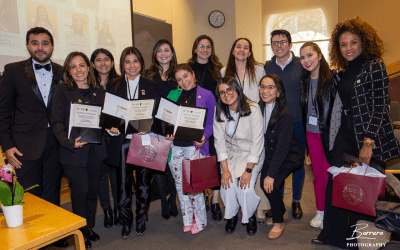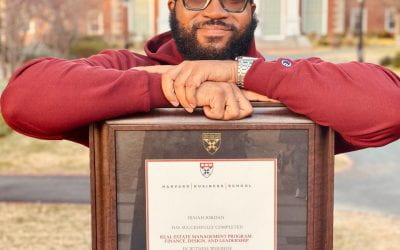About the Author
Sitalin Sánchez (she, her, hers) is a Maseual ceremonial dancer from San Miguel Tzinacapan, Puebla, Mexico. She holds a BA in graphic design and an MA in communication and social change from the Ibero-American University Puebla. In 2022, she received a specialization degree on Epistemologies of the South. Her design projects have earned the International CLAP Award 2022 and the National Design Award 2023. Since October, Sitalin’s artwork is featured in the collective exhibition Lumbre, Ilustradoras de México at the Museo Universitario del Chopo, in Mexico City. Currently, she is an MTS candidate at Harvard Divinity School, where she’s researching the intersection of aesthetics, racism and indigeneity.
Sobre el Autor
Sitalin Sánchez (ella, la) es danzante ceremonial del pueblo Maseual de San Miguel Tzinacapan, Puebla. Sitalin estudió la licenciatura en Diseño Gráfico y una maestría en Comunicación y Cambio Social en la Universidad Iberoamericana Puebla. En 2022 realizó una especialidad en Epistemologías del Sur en el Consejo Latinoamericano de Ciencias Sociales. Sus proyectos de diseño han ganado el Premio Internacional CLAP 2022 y el Premio Diseña México 2023 en la categoría de diseño editorial. Desde octubre del presente año, el arte de Sitalin forma parte de la exposición colectiva Lumbre Ilustradoras de México en el Museo Universitario del Chopo, Ciudad de México.
Actualmente, Sitalin estudia una maestría en estudios teológicos en la Universidad de Harvard. Su investigación se enfoca en el análisis de la intersección entre estética, racismo e indigeneidad.
Ceremonial Dance
Experiencing Solidarity
“Do you think I can come dance with you at the patron saint festivities, even though I’m going to study in the United States?” That was my question when I was invited by Abel Gutiérrez y Amado Gallado to participate in the ceremonial dances in my community. “Of course, why else does the Internet exist? We’ll send you the rehearsals by WhatsApp,” replied Gutiérrez, the lieutenant of the ceremonial dance Negritos “Tatomej [father] Arcángel Miguel de Tzinacapan.” For those of you who may not be familiar with the concept, a “lieutenant” is a seven-year position in which the person looks after the members of the ceremonial dance, providing time, energy, emotional support and economic resources.
I was surprised. It was June 2022 and a few months before, I had been accepted for the Master’s Program in Theological Studies at Harvard Divinity School. And although I was very excited to study in that program, I was concerned how I could reconcile living in another country as a full-time student of limited means with my commitment to be a ceremonial dancer.
When I was five years old, my mother asked me if I’d like to participate in the various ceremonial dances in the town where I grew up. I’m now 28, and I’ve always been a dancer in my town, San Miguel Tzinacapan, a Maseual town in the Sierra Norte de Puebla, Mexico. At least 600 of the some 6,000 residents belong to a dance group, whether as dancers, musicians or lieutenants. And, if one counts the many people who help out with food, cloth for the costumes and the musical instruments, the number would increase to 1,500 personas.
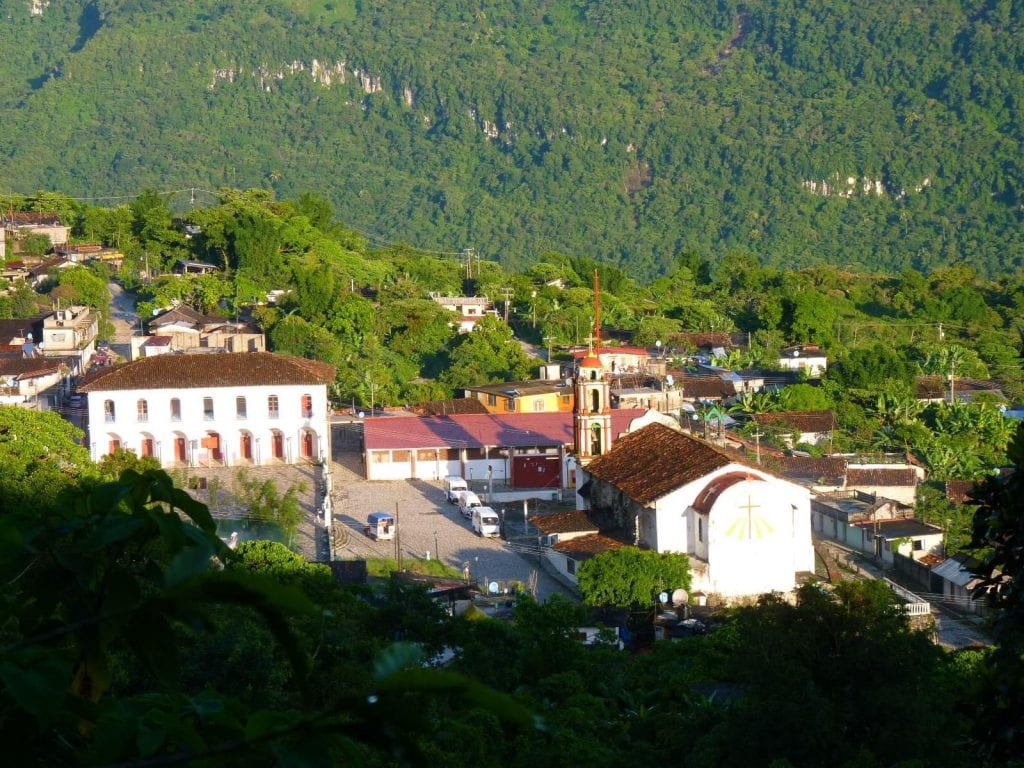
Although the dances are an enjoyable activity, above all, they are a commitment of faith. The dances embody the extraordinary time that makes sense of our existence. This extraordinary time brings together celebrations of the Mesoamerican farming calendar with that of Catholic Church religious festivities in a ceremonial cycle renewed every year. The heart of the ceremonial cycle is the patron saint festivity in honor of San Miguel Arcángel (Saint Michael the Archangel). The festivities begin September 27 and end October 1. During these five days, the 15 dance groups in Tzinacapan offer their music and steps from 10 a.m. to 10 p.m. Each dance has its history, music, script and different roles. However, all the members of the dance group make a promise to God to dance for at least seven consecutive years.
Every year, the dance groups get together to rehearse towards the end of July. For two months, every Saturday morning, one can hear in Tzinacapan violins, bells, guitars and flutes that announce the approaching festivities. Although I moved to a city three and a half hours from Tzinacapan in 2014, every year, I tried my best to be in the town with my dance group before and during the patron saint festivities. That meant getting permission from my university professors and staying up until the crack of dawn so I can get my work done before hand, and it meant talking to my bosses in my design job so I can work remotely during the festivities.
Like many other dancers who have had to migrate for studies or work, the fiesta is also the epoch of the eternal return. Knowing that returning would be unlikely during my time at Harvard Divinity School, I was filled with anguish. “So now you’re not going to be dancing,” several people commented to me. My dad calmly responded, “If our beloved Saint Michael wants, they’re going to see that you can indeed come dance.” And my mother, seeing how worried I was, encouraged me, “You have to have faith. Our beloved Saint Michael is going to guide us.”
The economic and logistical difficulties of returning filled me with doubt. What if my dance group wouldn’t let me join them because I couldn’t participate in the rehearsals? What if the Harvard Divinity School professors weren’t flexible about my absence from class? What if I got behind in my studies, already challenging because English is not my mother tongue? And was it crazy to make a 14-hour trip—between airplanes, taxis and long-distance buses—just to be four days in my hometown, as many people said? And, even if everything else was solved, where was I going to get the $1,000 to pay for the trip?
“Between all of us, let’s so what we can do so you can come back to the fiesta,” my brother, a SJD student at Harvard Law School, reassured me, noting my anxiety. His words, “between all of us,” were prophetic. I’ve been able to participate in the fiestas in Tzinacapan both in September 2022 and 2023. And that’s been thanks to an immense network of solidarity that begins and ends in my hometown, but has extended now to Cambridge, Massachusetts.
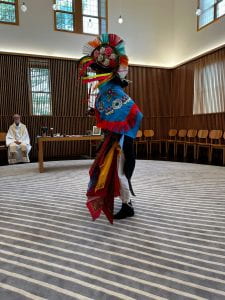 The invitation by the dance leaders Abel Gutiérrez and Amado Gallardo to join the ceremonial dance was the first demonstration of love. With a knot in my throat, I thanked them for permitting me to join the group, knowing that this represented a change in community traditions. But I felt support and love from everyone. Through photos, videos and Facebook Live, I practiced the steps in my brother’s dorm in Harvard’s Pforzheimer House.
The invitation by the dance leaders Abel Gutiérrez and Amado Gallardo to join the ceremonial dance was the first demonstration of love. With a knot in my throat, I thanked them for permitting me to join the group, knowing that this represented a change in community traditions. But I felt support and love from everyone. Through photos, videos and Facebook Live, I practiced the steps in my brother’s dorm in Harvard’s Pforzheimer House.
The second demonstration of tenderness and kindness came from my professors. Professors Ann Braude and Giovanna Parmigiani of Harvard Divinity School, as well as other professors like Professors Tom Cummins, Seth Estrin and Jennifer Biddle, of the Faculty of Arts and Sciences, shared the emotion of my trip.
When I got back from Tzinacapan, they offered me help in going over the lectures I’d missed. The third demonstration of affection came from my advisor, Professor Davíd Carrasco. He confided in my ability to present my experience as a dancer in his class, “Moctezuma’s Mexico Then and Now: Ancient Empires, Race Mixture, and Finding Latinx,” a recognition I received with profound gratitude. Moreover, he offered me the opportunity to collaborate with the Moses Mesoamerican Archives and Research Project. This work allowed me to finance part of my trip.
The trip expenses have been a source of constant cooperation. Friends living in Boston volunteered to take me to the airport; others have paid for my luggage, and others have invited me out to lunch, looking after my health. Friends from the Catholic Renewal group and The Paulist Center Boston have seen in my dance a form of ministry that is at once Catholic and Indigenous. They, together with Father Frank X. Clooney, S.J., have made it possible to celebrate the other important dates of our ceremonial cycle here in Boston, for example, the thanksgiving mass we celebrate at the end of April. My friends and family living in Tzinacapan have sewn and embroidered my dance costume, bought my shoes, and prepared the required musical instrument without charging me for their work. It is because of them that it has been possible to return to the place where my umbilical cord is buried (a custom throughout much of Latin America, including Tzinacapan, to ensure that people return to their birthplace).
Every dance group and every dancer have similar histories. We know that our dance is an offering to God in a collective fashion. We are the visible demonstration of a fabric created with many hands, pain, efforts and joy. It’s just that I never imagined that this fabric could surpass mountains and oceans, languages and different ways of thinking. But now I know it can.
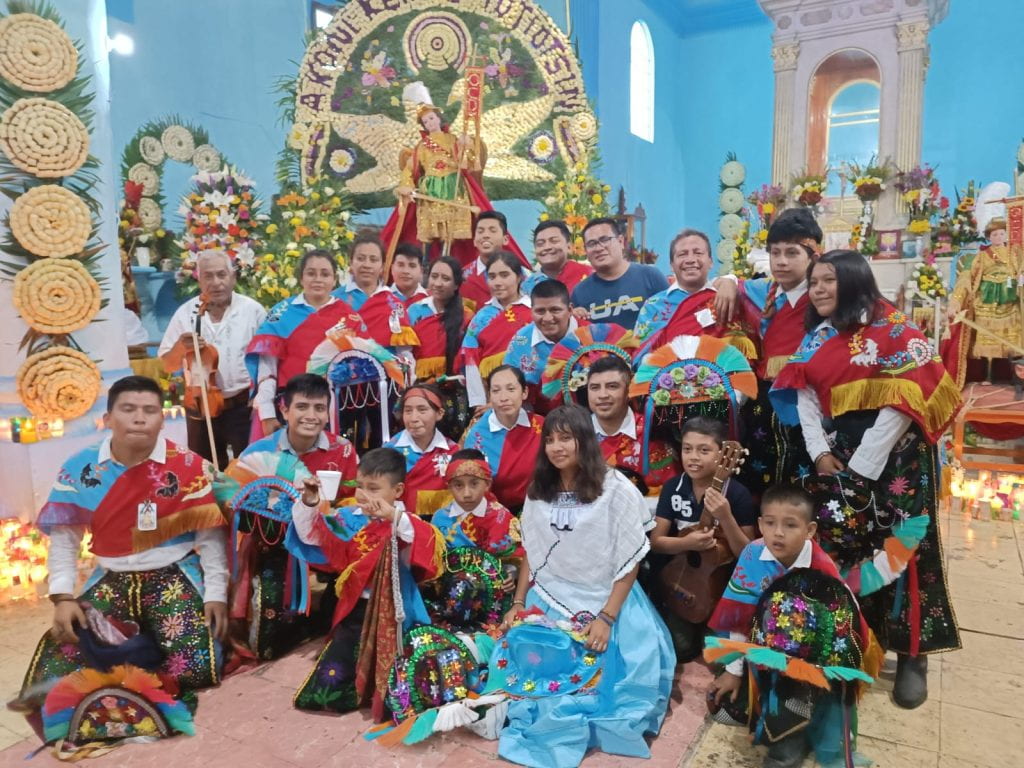
Experiencias de solidaridad
A través de la danza ceremonial
By Sitalin Sánchez
“¿Creen que pueda venir a danzar con ustedes en la fiesta patronal, aunque me vaya a vivir a Estados Unidos?” Fue mi pregunta al recibir la invitación de participar en una de las danzas ceremoniales de mi comunidad por parte de los maestros Abel Gutiérrez y Amado Gallado.
“Claro que sí, si no ¿para qué está el internet? contestó Gutiérrez, teniente de la danza ceremonial Negritos “Tatomej [padre] Arcángel Miguel de Tzinacapan”. Para quienes no conozcan, los tenientes son personas encargadas con un término de siete años de velar por el bienestar de los integrantes de las danzas ceremoniales. Brindan tiempo, energía, apoyo emocional y recursos económicos para asegurarse que el grupo de danza tenga todo lo necesario para su participación en diferentes fiestas religiosas a lo largo de año.
Recibí sus palabras con sorpresa. Era junio de 2022 y unos meses atrás había sido aceptada en la Maestría en Estudios Teológicos (MTS) en la Harvard Divinity School. Y aunque me emocionaba estudiar en dicho programa, me preguntaba cómo podría conciliar vivir en otro país, ser estudiante de tiempo completo y tener ingresos limitados con mi compromiso de ser danzante ceremonial.
Cuando tenía cinco años, mi mamá me preguntó si quería participar en un grupo de las distintas danzas ceremoniales que hay en el pueblo en el que crecí. Desde entonces, hasta ahora que tengo 28 años, he sido danzante en mi pueblo, San Miguel Tzinacapan, un pueblo Maseual ubicado en la Sierra Norte de Puebla, México. De los 6000 habitantes que conforman a la comunidad, al menos 600 de ellos están vinculados a un grupo de danza, ya sea como danzantes, músicos, o tenientes. Y, si se contara el número de personas que las apoyan con comida, tela para trajes e instrumentos de música, el número aumentaría a 1500 personas involucradas.

Aunque las danzas son una actividad gozosa son, ante todo, un compromiso de fe. Las danzas encarnamos el tiempo extraordinario que le da sentido a nuestra existencia. Este tiempo extraordinario une celebraciones del calendario agrícola mesoamericano con el calendario de festividades religiosas de la Iglesia Católica en un ciclo ceremonial que es renovado cada año. El corazón del ciclo ceremonial es la fiesta patronal del pueblo en honor a San Miguel Arcángel. La fiesta inicia el día 27 de septiembre y finaliza el día 01 de octubre. Durante estos cinco días, los 15 grupos de danzas que hay en Tzinacapan ofrendan su sones y pasos desde las 10 de la mañana hasta las 10 de la noche. Cada danza tiene una historia, música, guión y roles diferentes. Sin embargo, todos los miembros de la danza realizan una promesa a Dios de bailar, por lo menos, siete años consecutivos.

Cada año, los grupos de danza se reúnen para ensayar a finales del mes de julio. Durante dos meses, en las mañanas de los días sábado se pueden escuchar en Tzinacapan violines, cascabeles, guitarras y flautas que anuncian que la fiesta se acerca. Aunque desde 2014 yo me había mudado a una ciudad a tres horas y media de Tzinacapan, cada año hacía lo posible por estar antes y durante la fiesta patronal con mi grupo de danza. Desde pedir permiso a los profesores de mi universidad y desvelarme para terminar mi trabajo a tiempo, hasta hablar con los jefes de mi trabajo como diseñadora para hacer trabajo remoto durante los días de fiesta.
Como muchos otros danzantes que han tenido que migrar a otro lugar por estudios o trabajo, la fiesta es también la época del eterno retorno. Saber que ese retorno era poco probable durante los dos años de la maestría no sólo era triste, me llenaba de angustia. “Ahora sí ya no vas a bailar” me comentaban varias personas. Mi papá, tranquilo, les respondía “Si San Miguelito quiere, van a ver que sí va a poder danzar”. Al notar mi preocupación mi mamá me alentaba: “tienes que confiar, San Miguelito nos va a guiar”.
Las dificultades económicas y la logística para lograrlo me llenaban de incertidumbre. ¿Y si mi grupo de danza ya no me recibe porque no podré estar en los ensayos? ¿Y si los profesores de Harvard Divinity School no eran flexibles ante mi ausencia en clases? ¿Y si por mi ausencia me atrasaba en mis estudios, ya de por sí difíciles al no ser el inglés mi lengua nativa? ¿Y si hacer un viaje de 14 horas, entre aviones, taxis y autobuses sólo para estar cuatro días en mi tierra, era, como muchos me decían, una locura? Y si todo eso salía bien, ¿de dónde sacaba yo 1000 dólares para costearme ese viaje?
“Entre todos vemos cómo le hacemos para que regreses a la fiesta” me dijo un día mi hermano al verme agobiada. Las palabras de mi hermano, un estudiante del SJD en Harvard Law School, fueron proféticas. Tanto en septiembre de 2022 como en septiembre de 2023 he podido participar durante cuatro de los cinco días en la fiesta de Tzinacapan. Y ha sido gracias a una inmensa red de solidaridad que me ha alentado a continuar danzando. Una red que inicia y termina en Tzinacapan, pero que se ha extendido hasta la tierra de Cambridge, Massachusetts.
La visita de los maestros Abel Gutiérrez y Amado Gallardo para invitarme a unirme a la danza ceremonial Negritos Tatomej fue la primera muestra de amor que recibí. Con un nudo en la garganta les di las gracias por permitirme estar en el grupo de danza a la distancia. Sabía y sé, que esta situación representa un cambio en las tradiciones de la comunidad. A pesar de ello, el maestro de danza de mi grupo, Santiago Amado, los músicos y mis compañeros me hicieron sentir respaldada y querida. Con fotografías, videos y lives de Facebook ensayé los pasos de danza en la casa de mi hermano en Pforzheimer House, una residencia estudiantil.
La segunda muestra de ternura vino de parte de mis de profesores. La profesora Ann Braude y Giovanna Parmigiani de Harvard Divinity School, así como los Profesores Tom Cummins, Seth Estrin y Jennifer Biddle, de la Faculty of Arts and Sciences, compartieron la emoción de mi viaje. Al regresar de Tzinacapan, me ofrecieron su apoyo para revisar las lecturas de las clases en las que estuve ausente.
La tercera muestra de cariño fue de mi asesor, el profesor Davíd Carrasco. El profesor Davíd confió en mi voz para presentar mi experiencia como danzante durante su clase Moctezuma’s Mexico Then and Now: Ancient Empires, Race Mixture, and Finding Latinx, un reconocimiento que tomo con profunda gratitud. Además, me brindó la oportunidad de colaborar en el Moses Mesoamerican Archives and Research Project. Gracias a este trabajo pude financiar parte de mi viaje.
Los gastos de viaje han sido una cooperación constante. Con amigos viviendo en Boston que se han ofrecido a llevarme al aeropuerto, otros que han pagado mi maleta de viaje, y otros más que me han invitado a almorzar y a través de la comida han cuidado de mi bienestar. Amigos del grupo Catholic Renewal y The Paulist Center Boston que han visto en mi danza una forma de ministerio que es católica e indígena por igual. Ellos, junto con el padre Frank X. Clooney, S.J., han hecho posible que celebre las demás fechas importantes de nuestro ciclo ceremonial en Boston, por ejemplo, la misa de acción de gracias que celebramos a finales de abril. Con amigos y familia viviendo en Tzinacapan que han bordado y cosido mi traje de danzante, comprado mis zapatos, preparado el instrumento de música necesario para la danza sin cobrar por su trabajo. Son por todos ellos que ha sido posible regresar al lugar donde está enterrado mi cordón umbilical (en muchos lugares de América Latina, incluyendo Tzinacapan, los padres de los niños y niñas recién nacidos entierran su cordón umbilical en el patio de la casa familiar. Con esta acción, los niños y la tierra estarán conectados para siempre).
Cada grupo de danza y cada danzante tiene historias similares. Sabemos que nuestra danza es una ofrenda a Dios que se crea de manera colectiva. Somos la muestra visible de un tejido creado con muchas manos, dolores, esfuerzos y alegrías. Sólo que nunca imaginé que ese tejido podría traspasar montañas y mares, lenguas y pensamientos diferentes. Pero ahora sé que sí.

More Student Views
Colombian Women Who Empower Dreams
English + Español
The verraquera of Colombian women knows no bounds. This was the message left with me by the March 30 symposium, “Empowering Dreams: 1st symposium in honor to Colombian women at Harvard.”
A Review of Born in Blood and Fire
The fourth edition of Born in Blood and Fire is a concise yet comprehensive account of the intriguing history of Latin America and will be followed this year by a fifth edition.
Resilience of the Human Spirit: Seizing Every Moment
In the heart of Chicago, where I grew up, amidst the towering shadows of adversity, the lingering shadows of generational demons and the aroma of temptation, the key to the gateway of resilience and determination was inherited. The streets of my childhood neighborhood became, for many, prisons of poverty, plundering, crime and poor opportunity.

